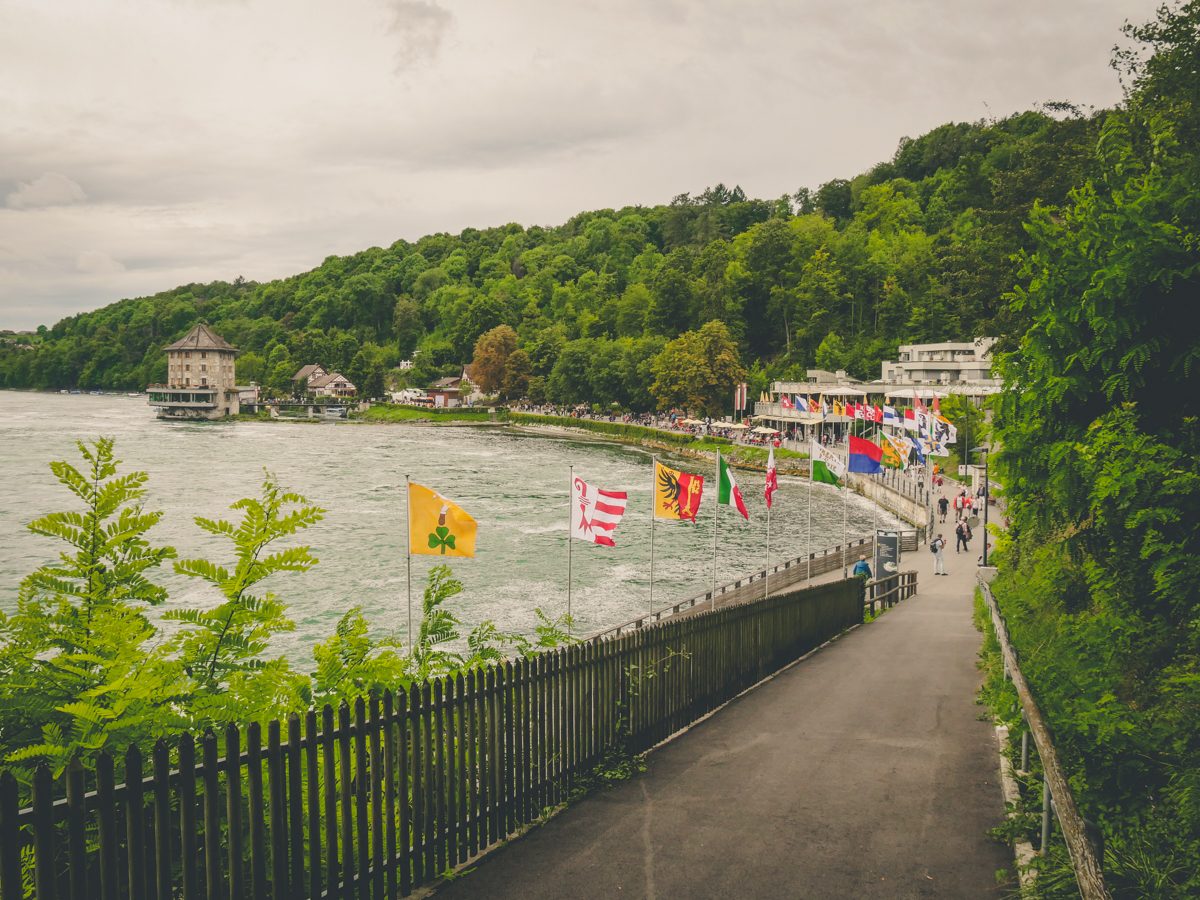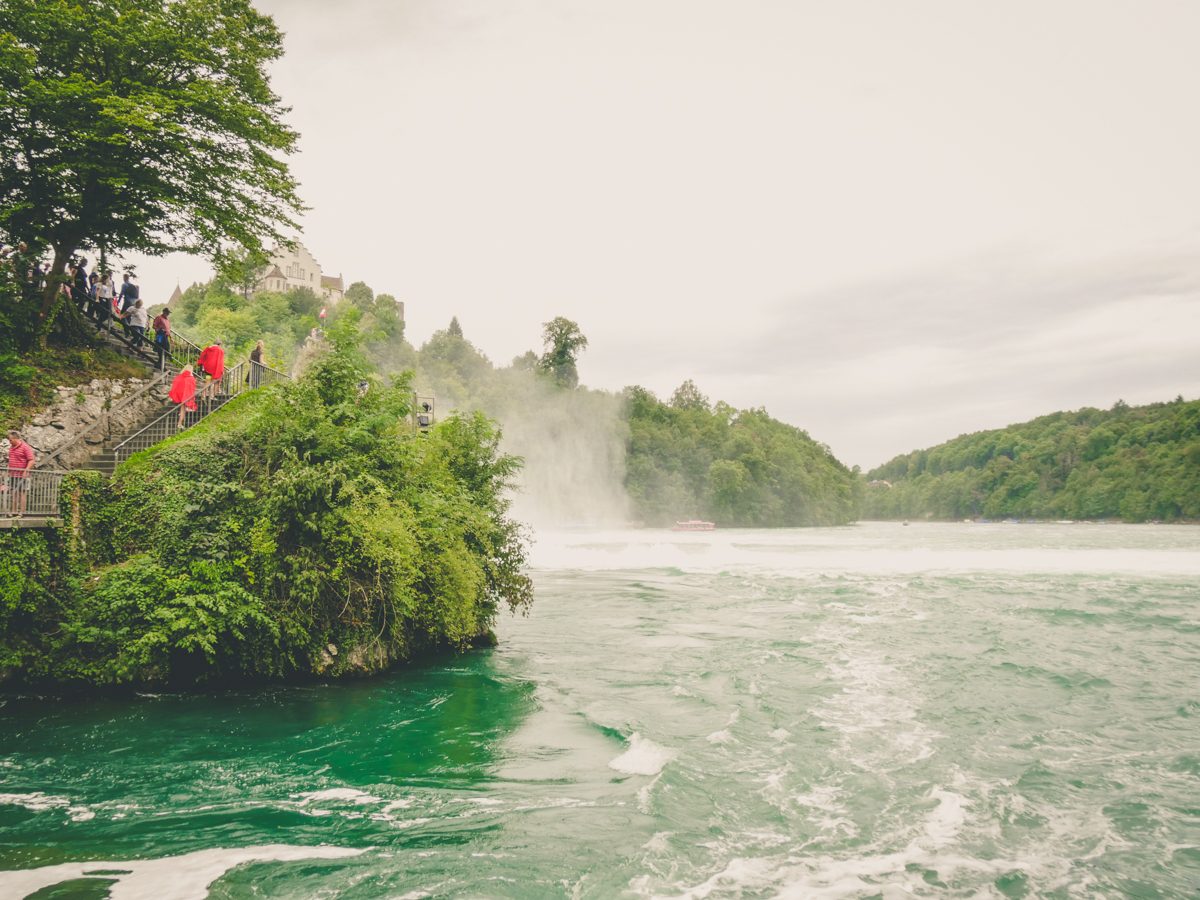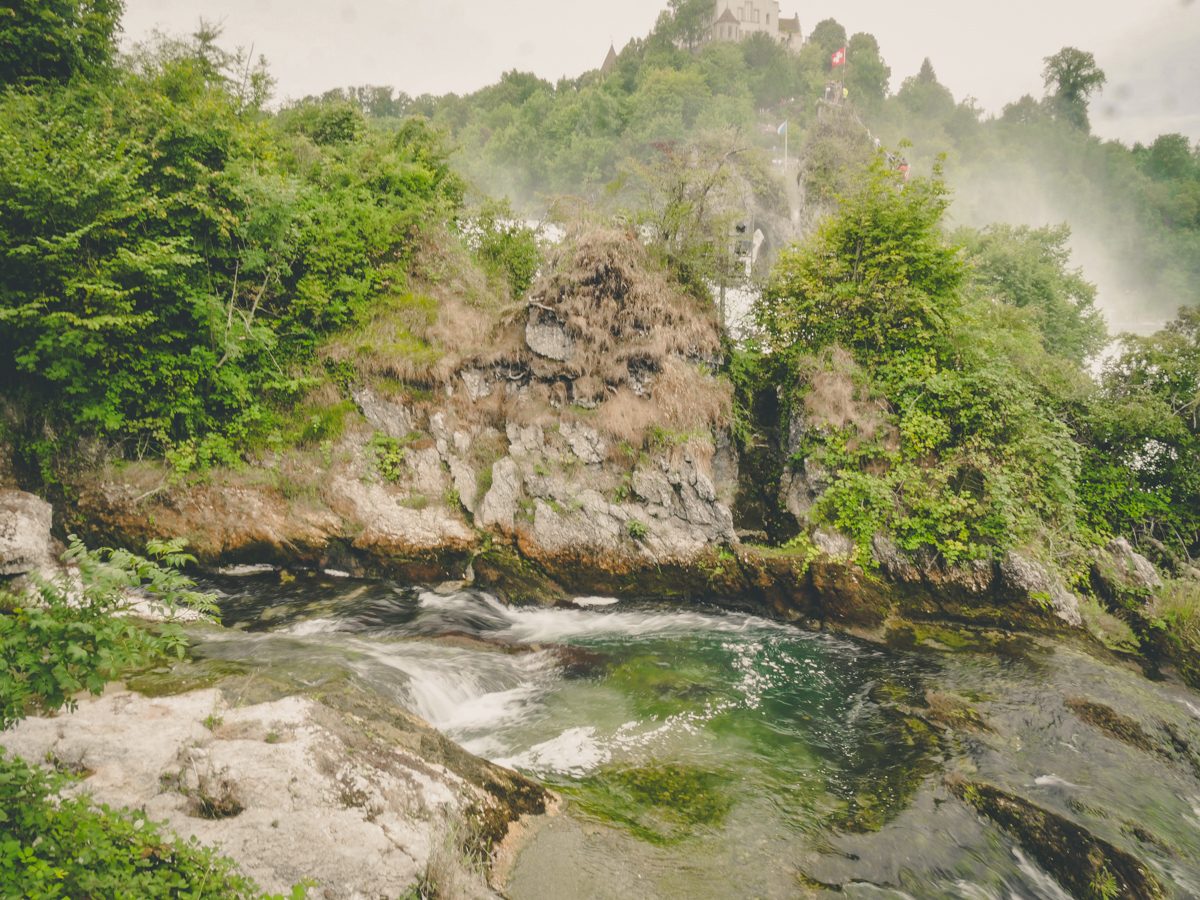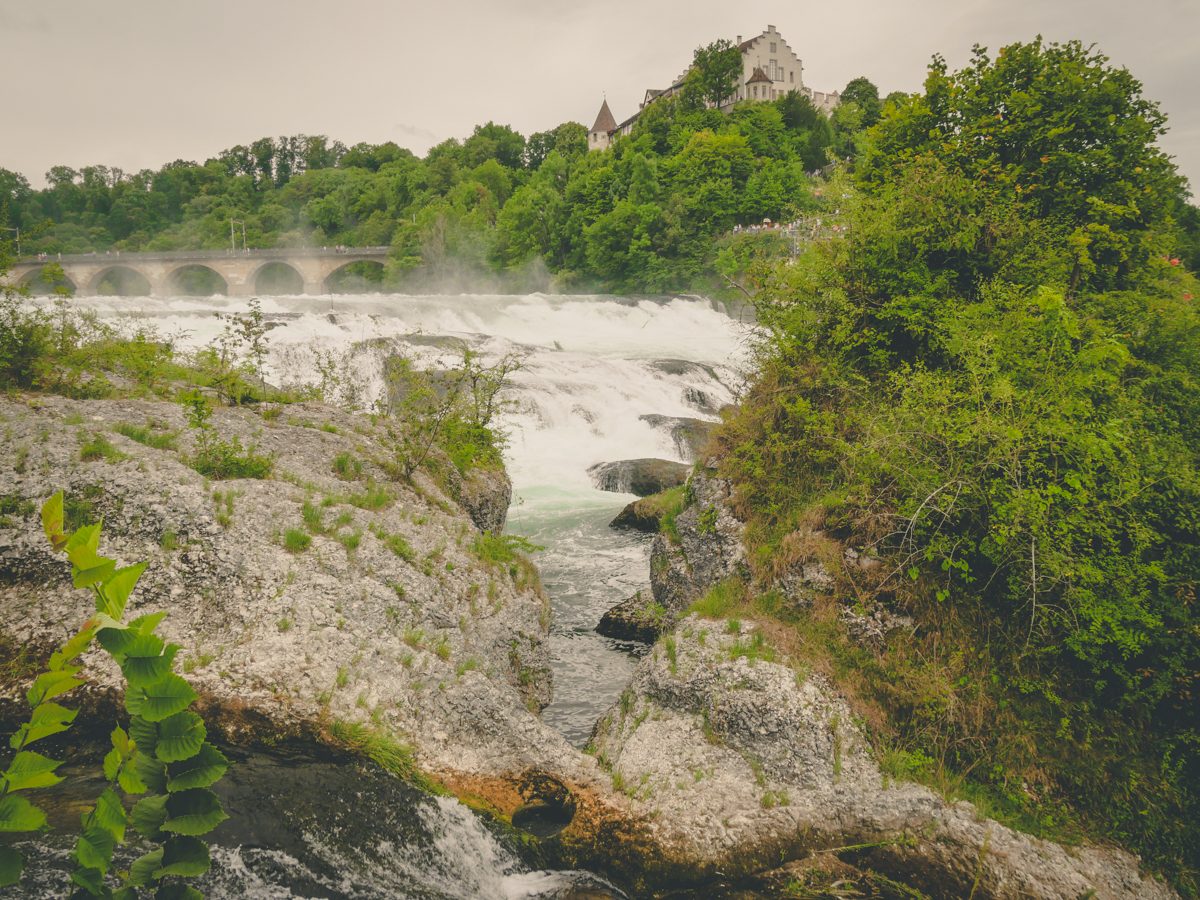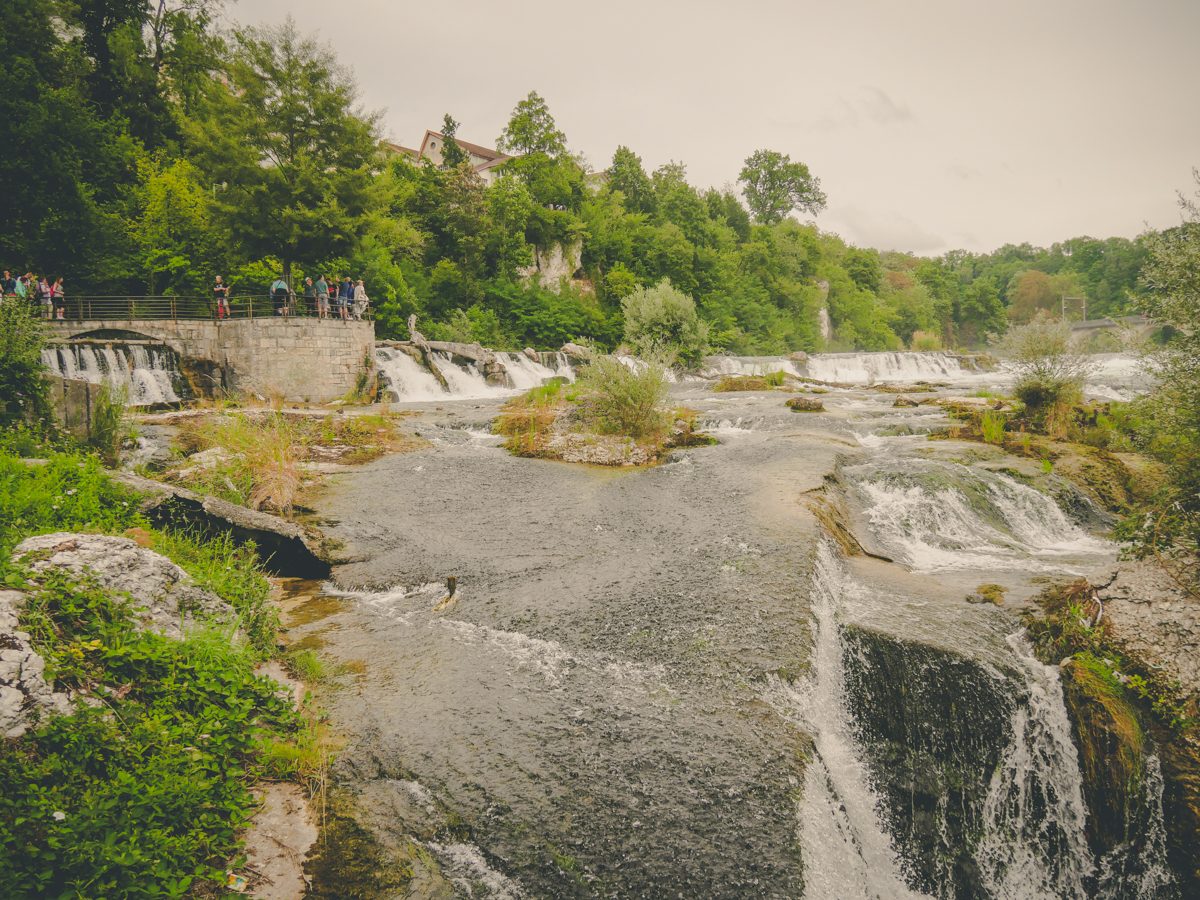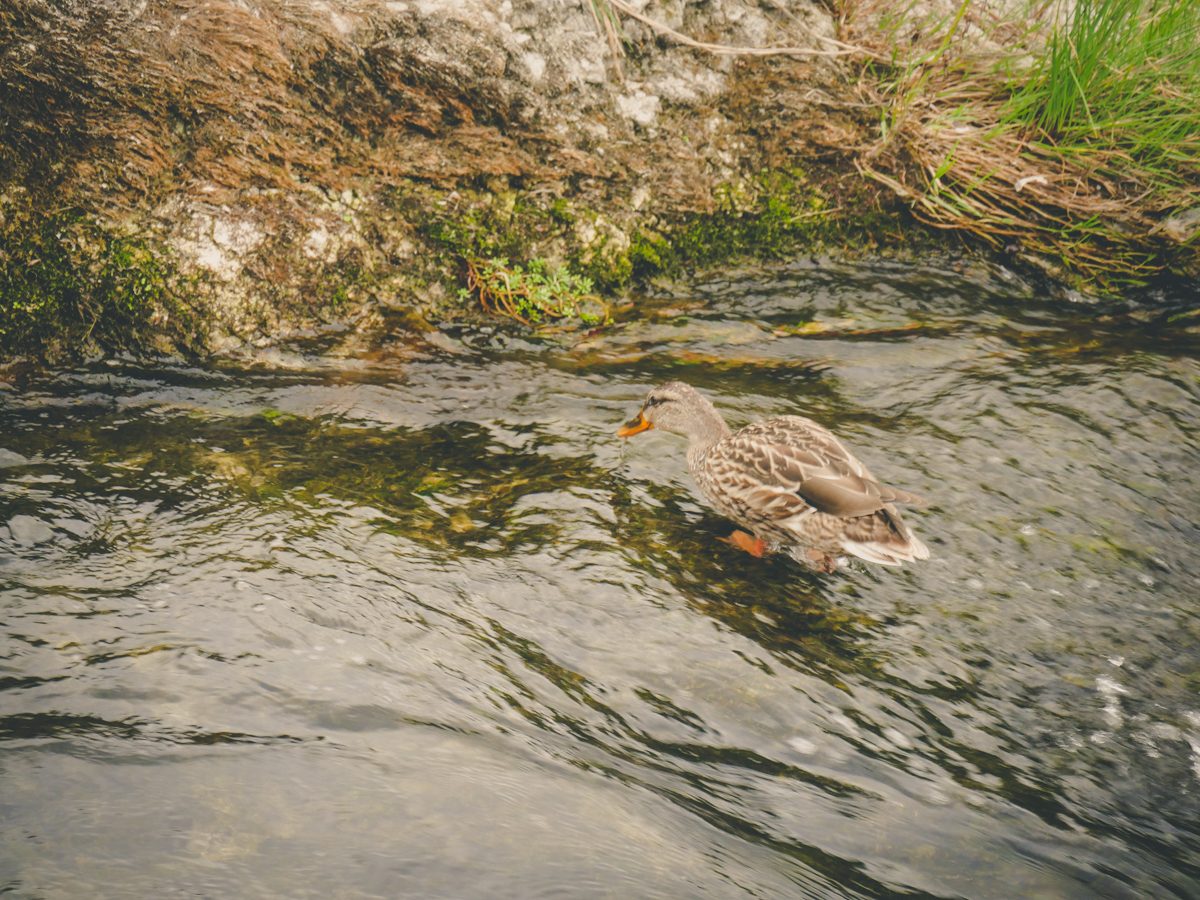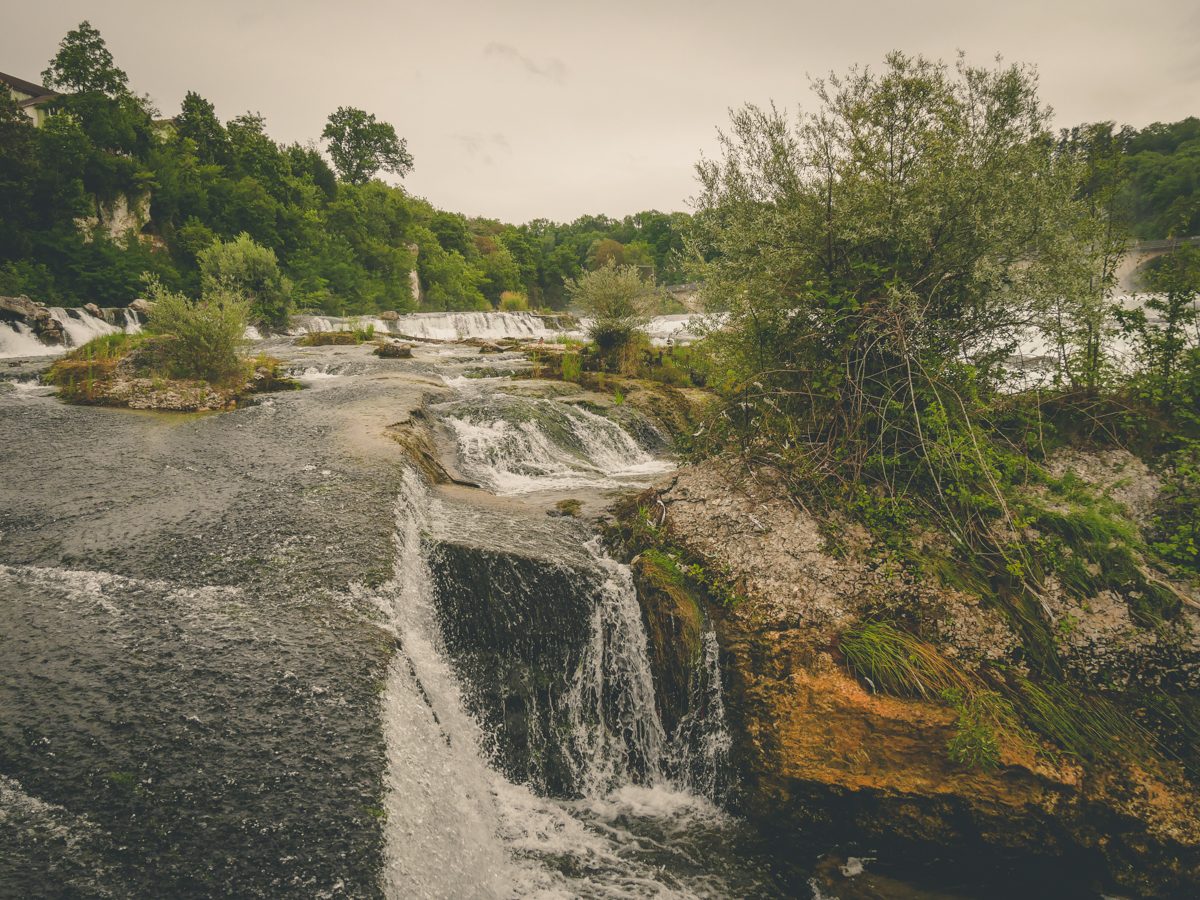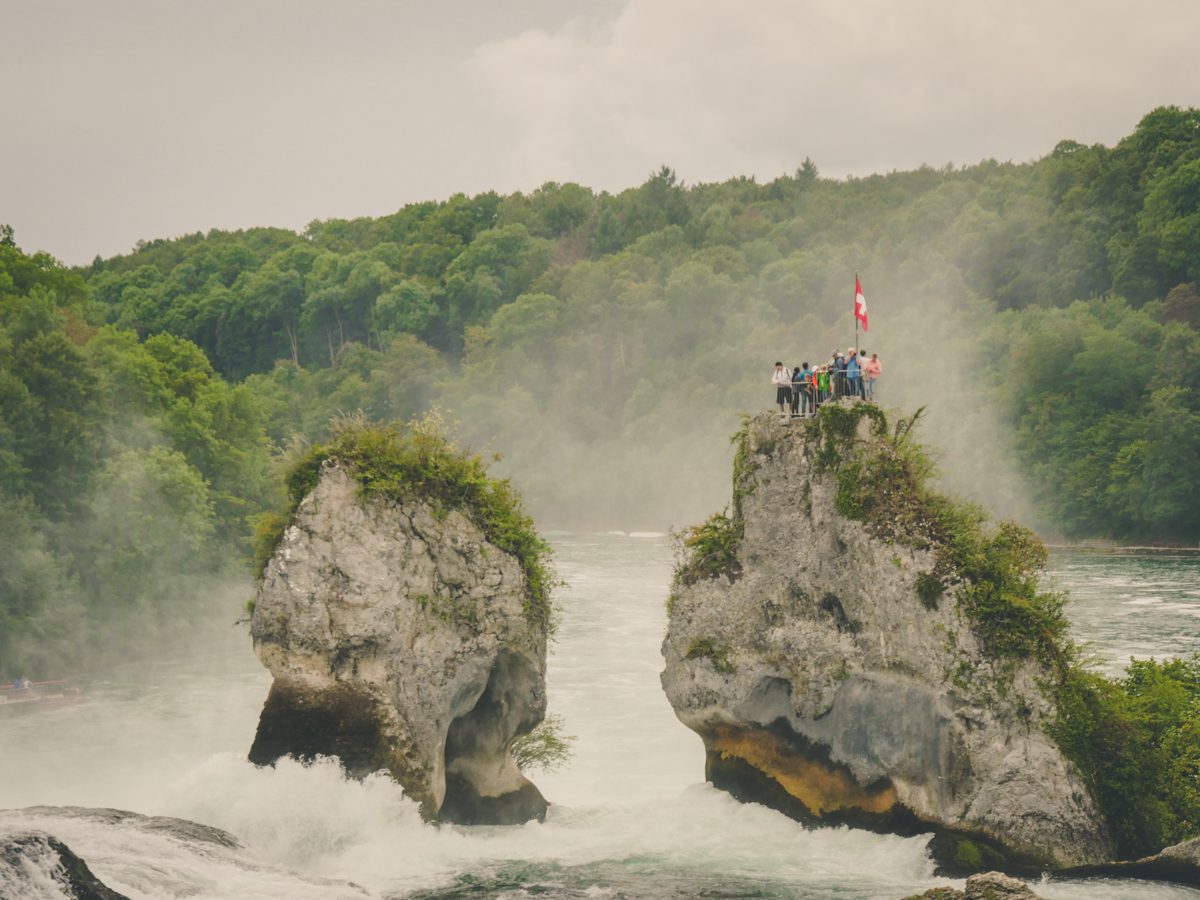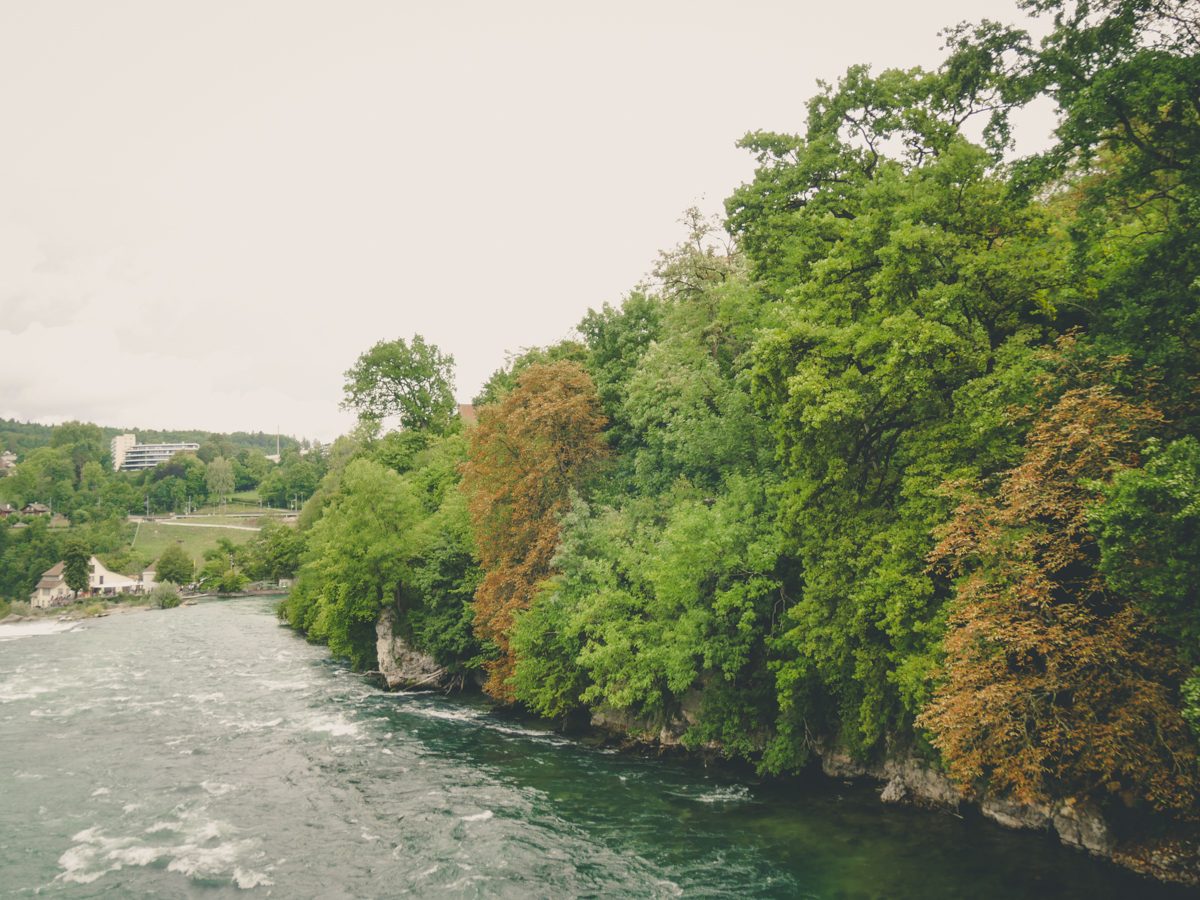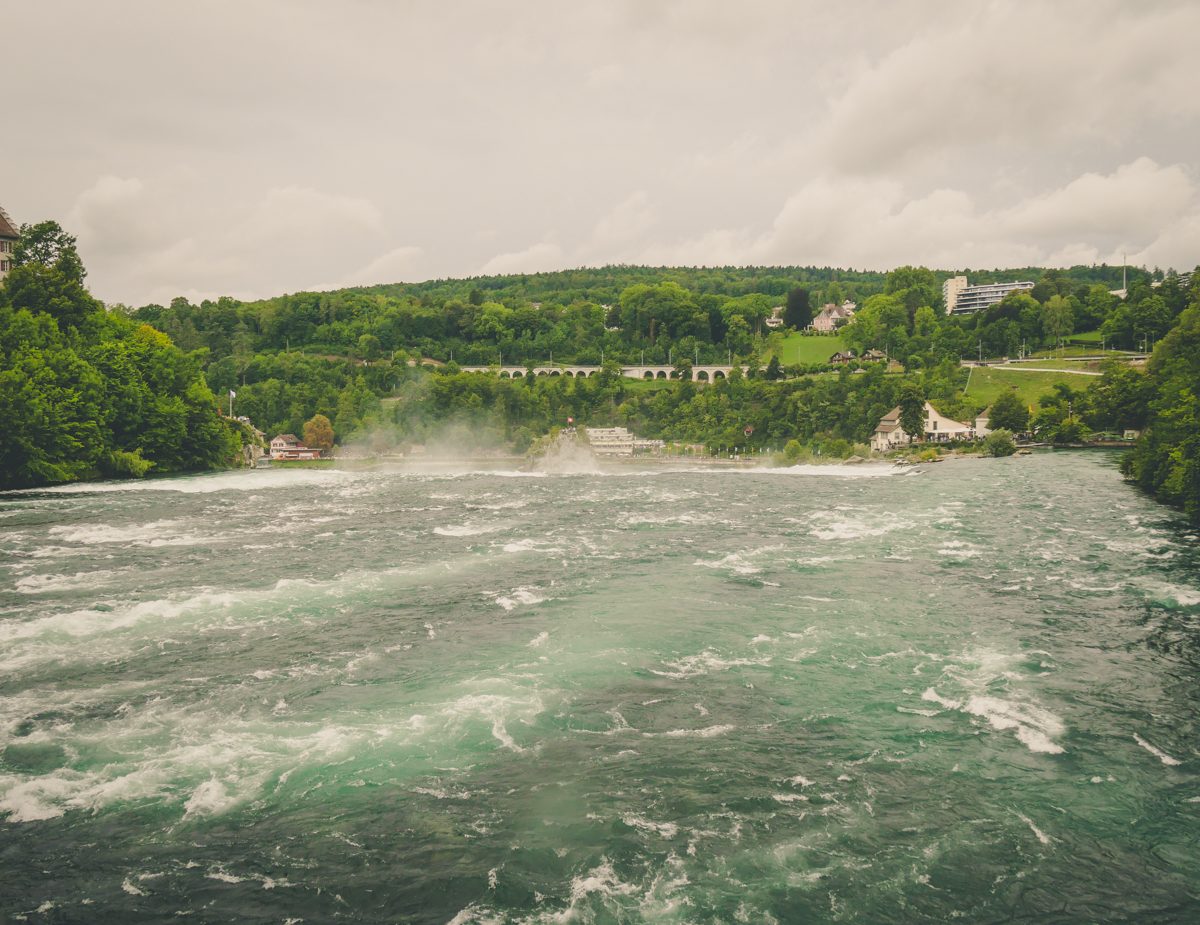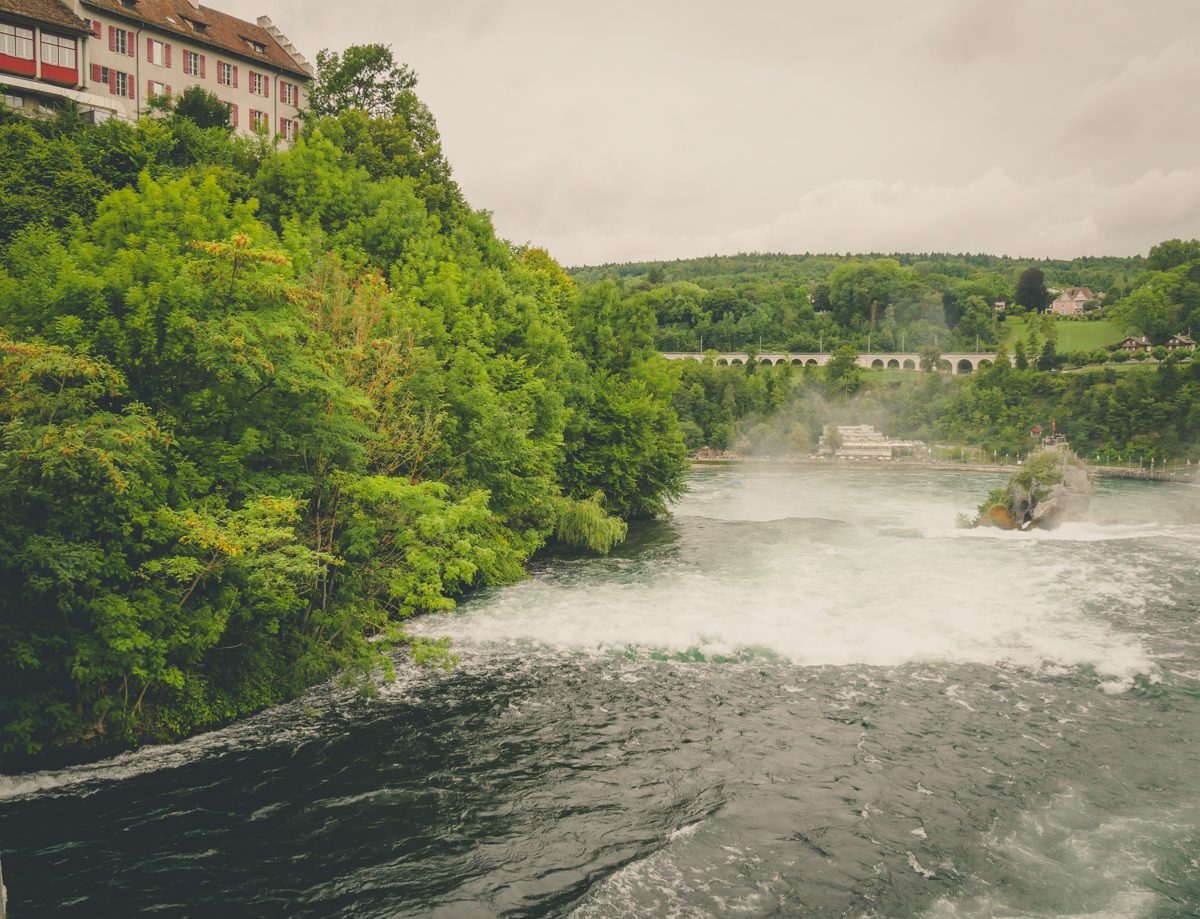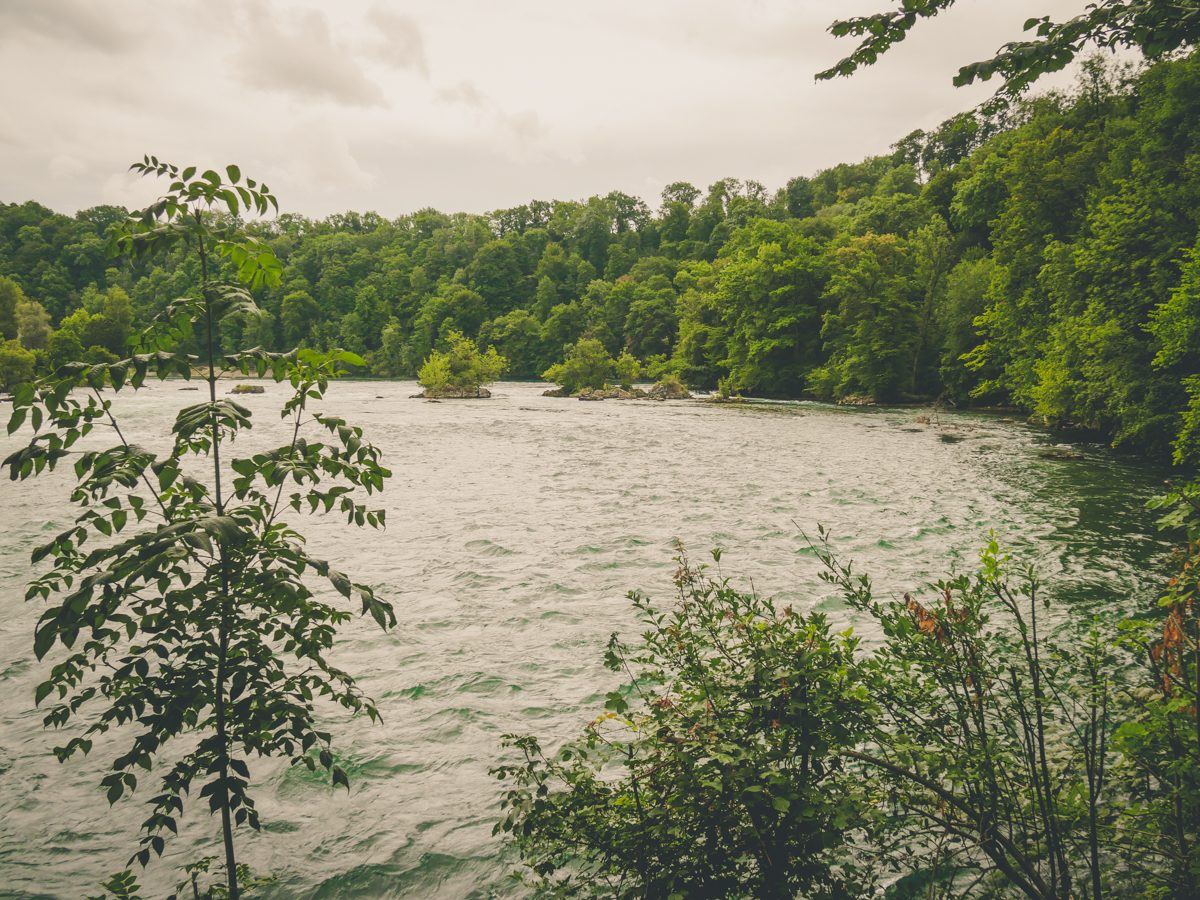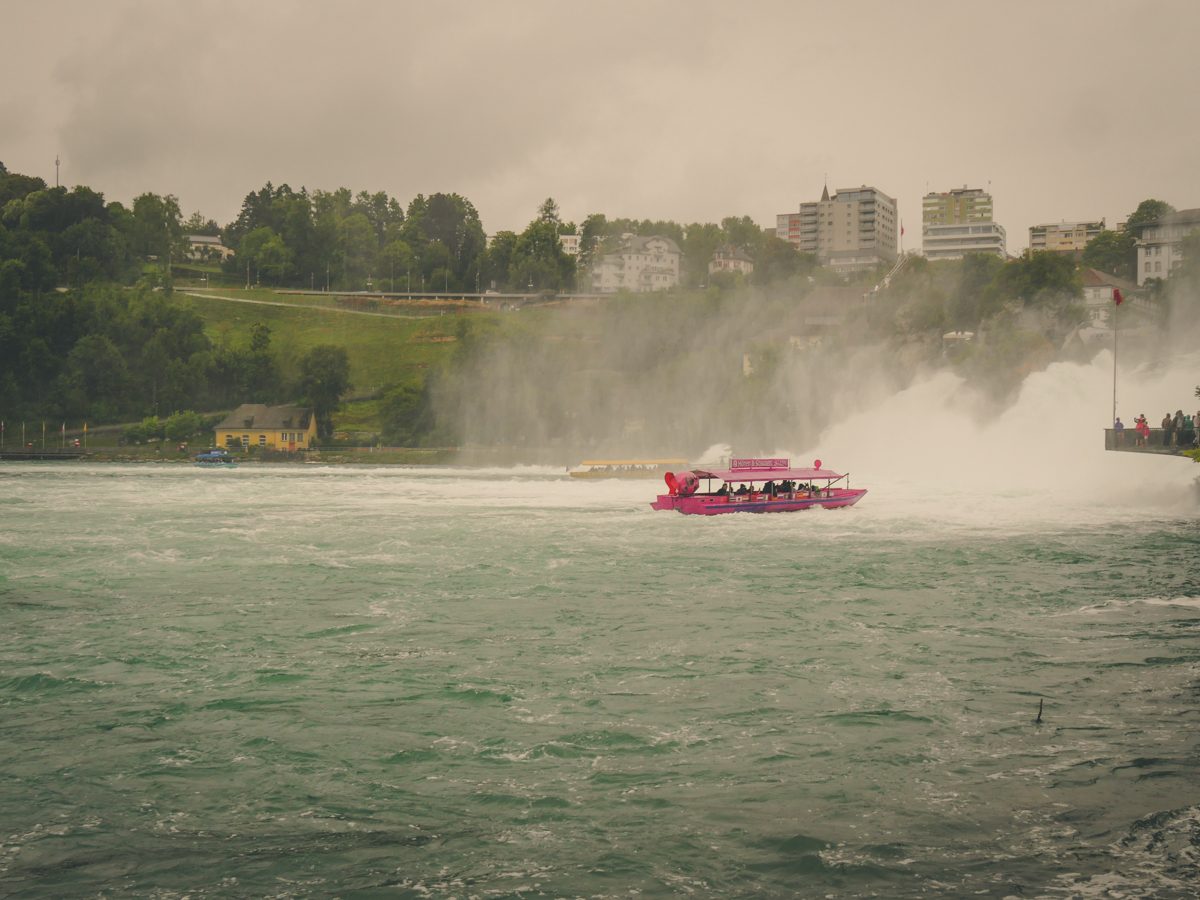As the train moved at breakneck speed towards Neuhausen Bahnhof, I caught a glimpse of the Rhine Falls’ splendour, and already my heart burnt with ecstasy. Bodies of water pouring and plunging over a tree-clad rock jutting skywards named Rheinfallfelsen, and their blustering music was hypnotic. The resonance of Europe’s largest plain waterfall was immediate, its visceral grandeur undeniable.
The formation of the Rhine Falls began some seventeen thousand years ago, though the shaping of the current landforms spanned five hundred thousand years. The river first streamed in a westerly direction from Schaffhausen through Klettgau, and over time debris accumulated atop the riverbed. Some 132,000 years ago, the course of the river was diverted southwards. Circa the Würm glacial period, also known as the Ice Age, tectonic shifts caused the Rhine River to once again change its course, reaching and eroding the hard Malm limestone. Standing as a remnant of the limestone cliff is the Rheinfallfelsen, which suffers the gush of six hundred cubic metres of water come summertime.
